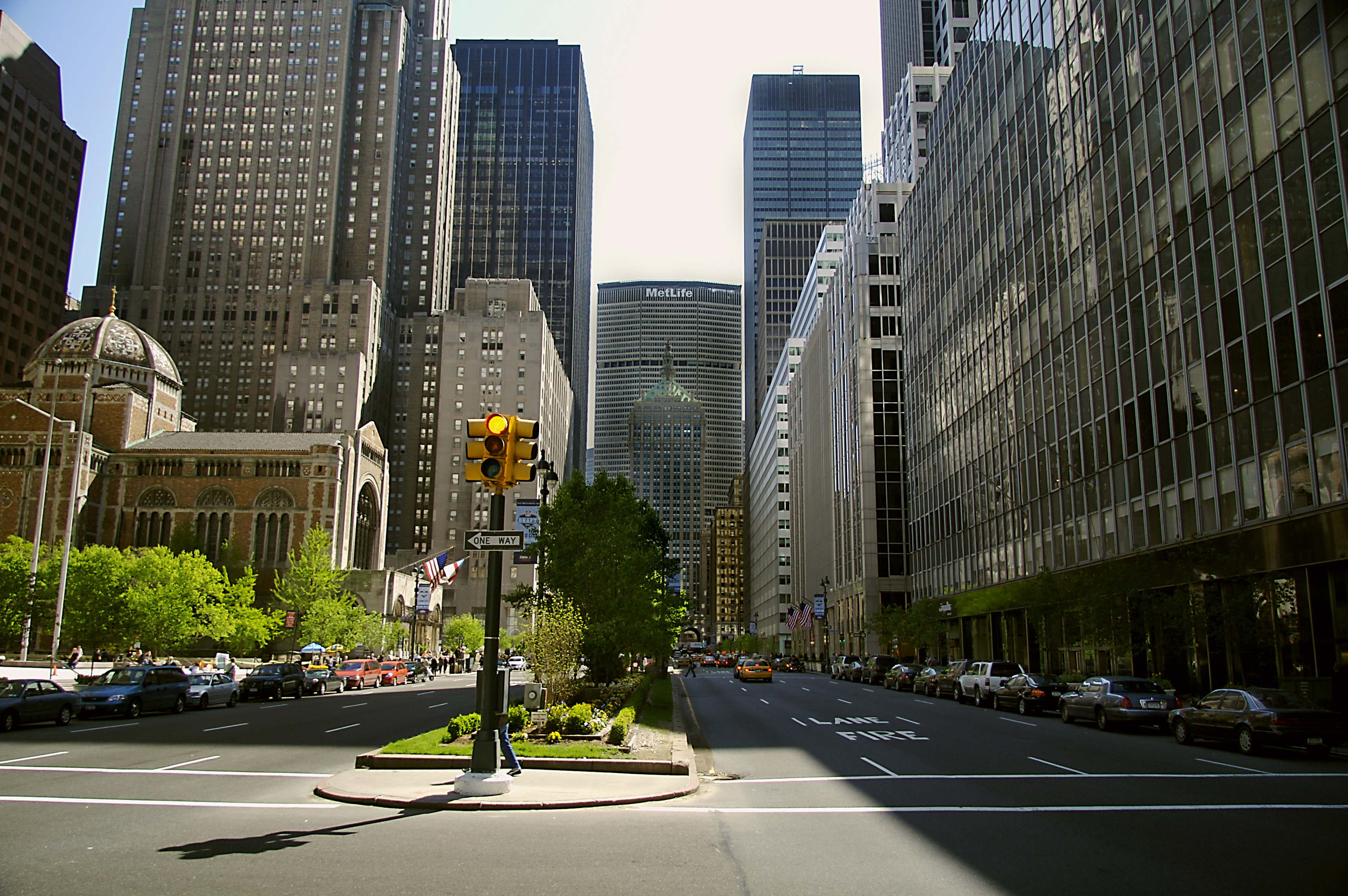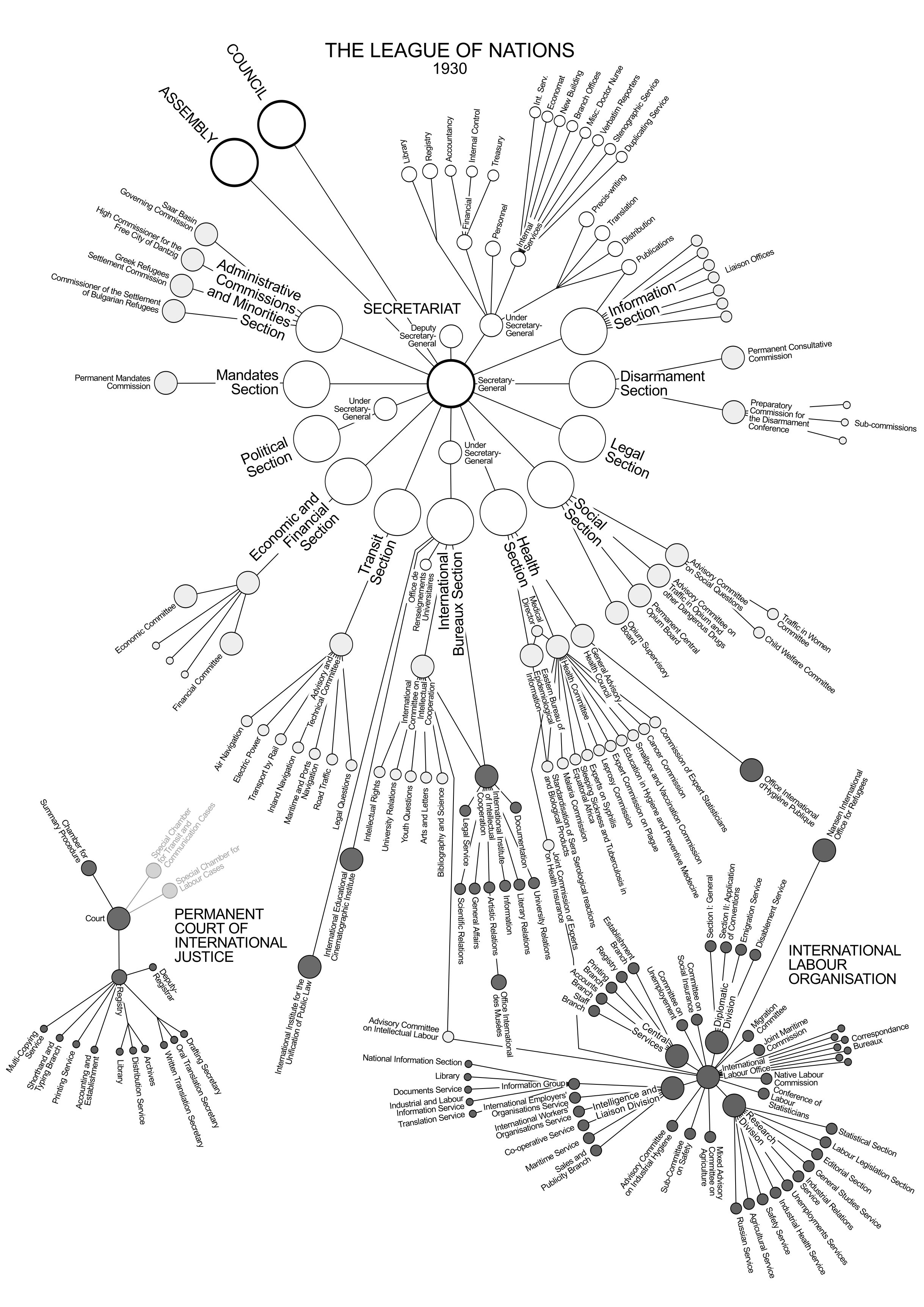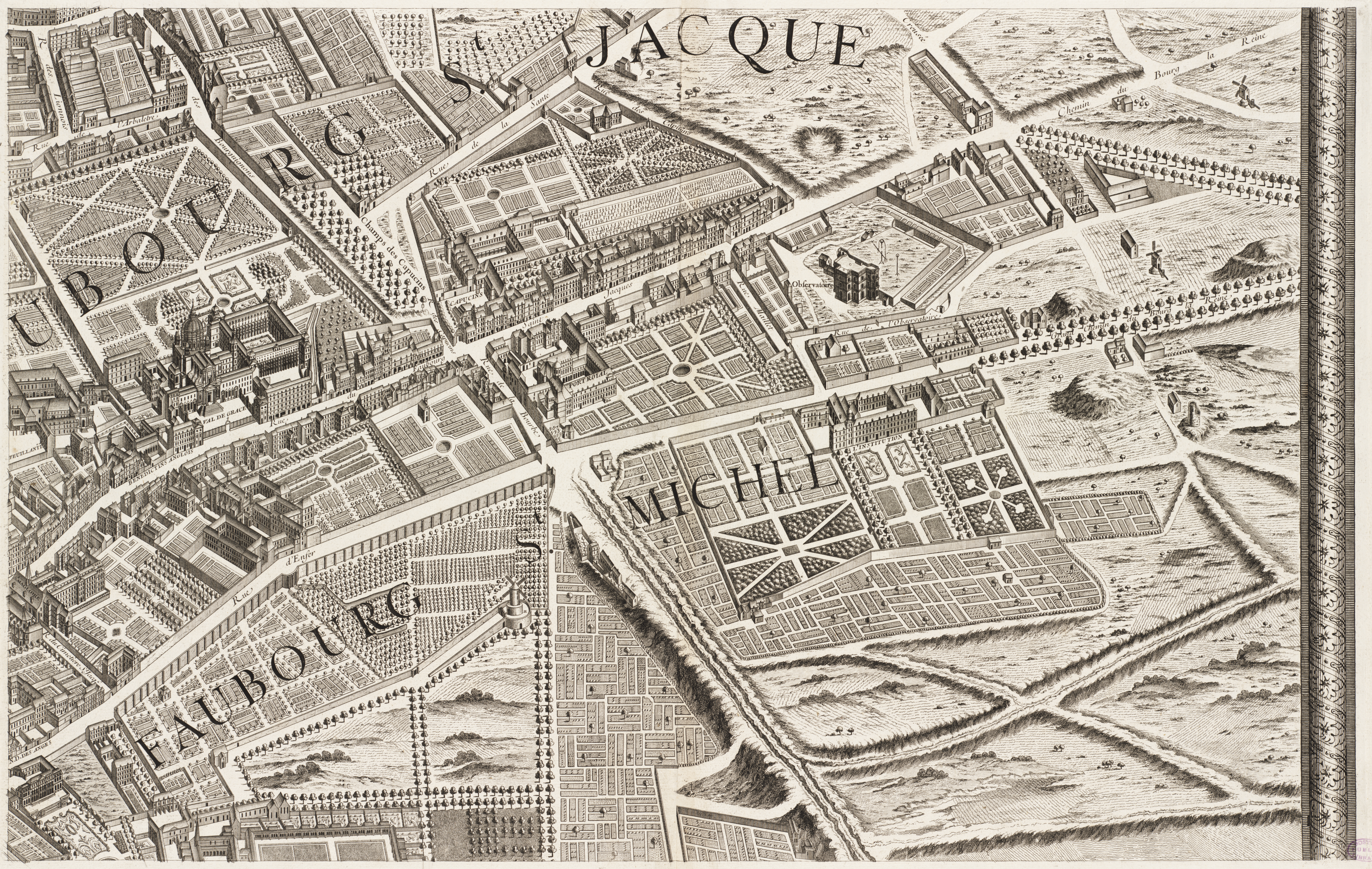|
Boulevard Saint-Germain
Boulevard Saint-Germain () is a major street in Paris on the Rive Gauche of the Seine. It curves in a 3.5-kilometre (2.1 miles) arc from the Pont de Sully in the east (the bridge at the edge of Île Saint-Louis) to the Pont de la Concorde (the bridge to the Place de la Concorde) in the west and traverses the 5th, 6th and 7th arrondissements. At its midpoint, the boulevard is traversed by the north-south Boulevard Saint-Michel. The boulevard is most famous for crossing the Saint-Germain-des-Prés quarter from which it derives its name. History The Boulevard Saint-Germain was the most important part of Haussmann's renovation of Paris (1850s and '60s) on the Left Bank. The Boulevard replaced numerous small streets which approximated its path, including, from west to east (to the current boulevard Saint-Michel), the Rue Saint-Dominique, Rue Taranne, Rue Sainte-Marguerite, Rue des Boucheries and Rue des Cordeliers.''Saint-Germain-des-Prés et son faubourg'', Dominique Leborgne, ... [...More Info...] [...Related Items...] OR: [Wikipedia] [Google] [Baidu] |
Boulevard Saint-Germain, Paris June 2010
A boulevard is a type of broad avenue (landscape), avenue planted with rows of trees, or in parts of North America, any urban highway. Boulevards were originally circumferential roads following the line of former defensive wall, city walls. In American usage, boulevards may be wide, multi-lane arterial thoroughfares, often divided with a central median, and perhaps with side-streets along each side designed as slow travel and parking lanes and for bicycle and pedestrian usage, often with an above-average quality of landscaping and scenery. Etymology The word ''boulevard'' is borrowed from French. In French, it originally meant the flat surface of a rampart (fortification), rampart, and later a promenade taking the place of a demolished fortification. It is a borrowing from the Dutch word ' 'Bastion, bulwark'. Usage world-wide Asia Cambodia Phnom Penh has numerous boulevards scattered throughout the city. Norodom Boulevard, Monivong Boulevard, Sihanouk Boulevard, and Kamp ... [...More Info...] [...Related Items...] OR: [Wikipedia] [Google] [Baidu] |
Saint-Germain-des-Prés
Saint-Germain-des-Prés () is one of the four administrative quarters of the 6th arrondissement of Paris, France, located around the church of the former Abbey of Saint-Germain-des-Prés. Its official borders are the River Seine on the north, the ' on the west, between the ' and ' on the east, and the ' on the south. Residents of the quarter are known as '. The quarter's cafés include Les Deux Magots, Café de Flore, le Procope, and the Brasserie Lipp, as well as many bookstores and publishing houses. In the 1940s and 1950s, it was the centre of the existentialist movement (associated with Jean-Paul Sartre and Simone de Beauvoir). It is also home to the École des Beaux-Arts, Sciences Po, the Saints-Pères biomedical university center of the University of Paris, the School for Advanced Studies in the Social Sciences, and the Musée national Eugène Delacroix, in the former apartment and studio of painter Eugène Delacroix. History The Middle Ages Until the 17th century the ... [...More Info...] [...Related Items...] OR: [Wikipedia] [Google] [Baidu] |
Office International D'hygiène Publique
The International Office of Public Hygiene, also known by its French name as the Office International d'Hygiène Publique and abbreviated as OIHP, was an international organization founded 9 December 1907 and based in Paris, France. It merged onto the World Health Organization after World War II. History It was created to oversee international rules regarding the quarantining of ships and ports to prevent the spread of plague and cholera, and to administer other public health conventions, leading to engage on other epidemics, and the collection of broader epidemiological data on various diseases, as well as issues such as the control of medicinal opium, cannabis, and other drugs, the traumas created by World War I, etc. The OIHP was part of the complex structure known as the Health Organization () of the League of Nations, in an often-competing, and sometimes collaborative relation with the League of Nations' Health Committee. The OIHP was dissolved by protocols signed 22 ... [...More Info...] [...Related Items...] OR: [Wikipedia] [Google] [Baidu] |
World War II
World War II or the Second World War, often abbreviated as WWII or WW2, was a world war that lasted from 1939 to 1945. It involved the vast majority of the world's countries—including all of the great powers—forming two opposing military alliances: the Allies and the Axis powers. World War II was a total war that directly involved more than 100 million personnel from more than 30 countries. The major participants in the war threw their entire economic, industrial, and scientific capabilities behind the war effort, blurring the distinction between civilian and military resources. Aircraft played a major role in the conflict, enabling the strategic bombing of population centres and deploying the only two nuclear weapons ever used in war. World War II was by far the deadliest conflict in human history; it resulted in 70 to 85 million fatalities, mostly among civilians. Tens of millions died due to genocides (including the Holocaust), starvation, ma ... [...More Info...] [...Related Items...] OR: [Wikipedia] [Google] [Baidu] |
Marcel Proust
Valentin Louis Georges Eugène Marcel Proust (; ; 10 July 1871 – 18 November 1922) was a French novelist, critic, and essayist who wrote the monumental novel ''In Search of Lost Time'' (''À la recherche du temps perdu''; with the previous English title translation of ''Remembrance of Things Past''), originally published in French in seven volumes between 1913 and 1927. He is considered by critics and writers to be one of the most influential authors of the 20th century. Background Proust was born on 10 July 1871 at the home of his great-uncle in the Paris Borough of Auteuil (the south-western sector of the then-rustic 16th arrondissement), two months after the Treaty of Frankfurt formally ended the Franco-Prussian War. His birth took place at the very beginning of the Third Republic, during the violence that surrounded the suppression of the Paris Commune, and his childhood corresponded with the consolidation of the Republic. Much of ''In Search of Lost Time'' concerns the ... [...More Info...] [...Related Items...] OR: [Wikipedia] [Google] [Baidu] |
Honoré De Balzac
Honoré de Balzac ( , more commonly , ; born Honoré Balzac;Jean-Louis Dega, La vie prodigieuse de Bernard-François Balssa, père d'Honoré de Balzac : Aux sources historiques de La Comédie humaine, Rodez, Subervie, 1998, 665 p. 20 May 1799 – 18 August 1850) was a French novelist and playwright. The novel sequence ''La Comédie humaine'', which presents a panorama of post-Napoleonic French life, is generally viewed as his '' magnum opus''. Owing to his keen observation of detail and unfiltered representation of society, Balzac is regarded as one of the founders of realism in European literature. He is renowned for his multi-faceted characters; even his lesser characters are complex, morally ambiguous and fully human. Inanimate objects are imbued with character as well; the city of Paris, a backdrop for much of his writing, takes on many human qualities. His writing influenced many famous writers, including the novelists Émile Zola, Charles Dickens, Marcel Proust, ... [...More Info...] [...Related Items...] OR: [Wikipedia] [Google] [Baidu] |
Champs-Élysées
The Avenue des Champs-Élysées (, ; ) is an avenue in the 8th arrondissement of Paris, France, long and wide, running between the Place de la Concorde in the east and the Place Charles de Gaulle in the west, where the Arc de Triomphe is located. It is known for its theatres, cafés and luxury shops, as the finish of the Tour de France cycling race, as well as for its annual Bastille Day military parade. The name is French for the Elysian Fields, the place for dead heroes in Greek mythology. It is commonly regarded as the "most beautiful avenue in the whole world". Description The avenue runs for through the 8th arrondissement in northwestern Paris, from the Place de la Concorde in the east, with the Obelisk of Luxor, to the Place Charles de Gaulle (formerly the ''Place de l'Étoile'') in the west, location of the Arc de Triomphe. The Champs-Élysées forms part of the ''Axe historique''. The lower part of the Champs-Élysées, from the Place de la Concorde to the Ron ... [...More Info...] [...Related Items...] OR: [Wikipedia] [Google] [Baidu] |
Rue Du Faubourg Saint-Honoré
The Rue du Faubourg Saint-Honoré () is a street located in the 8th arrondissement of Paris, France. Relatively narrow and nondescript, especially in comparison to the nearby Avenue des Champs-Élysées, it is cited as being one of the most luxurious and fashionable streets in the world thanks to the presence of virtually every major global fashion house, the Élysée Palace (official residence of the President of France), the Hôtel de Pontalba (residence of the United States Ambassador to France), the Embassy of Canada, the Embassy of the United Kingdom, as well as numerous art galleries. The rue Saint-Honoré, of which the rue du Faubourg Saint-Honoré is now an extension, began as a road extending west from the northern edge of the Louvre Palace. ''Saint Honoré'', Honorius of Amiens, is the French patron saint of bakers. History Until the 18th century, a few villages were dispersed in a rural area that extended west of the Louvre. The main street (a dirt road) of Roule, ... [...More Info...] [...Related Items...] OR: [Wikipedia] [Google] [Baidu] |
Rive Droite
The Rive Droite (, ''Right Bank'') is most commonly associated with the river Seine in central Paris. Here, the river flows roughly westwards, cutting the city into two parts. When facing downstream, the northern bank is to the right, and the southern bank (or ''Rive Gauche'') is to the left. The Right Bank's most famous street is the ''Champs-Élysées'', with others of prominence being ''Rue de la Paix'', ''Rue de Rivoli'' and ''Avenue Montaigne''. See also * Arrondissements of Paris * Rive Gauche * Bank (geography) In geography, a bank is the land alongside a body of water. Different structures are referred to as ''banks'' in different fields of geography, as follows. In limnology (the study of inland waters), a stream bank or river bank is the terrai ... References {{Reflist Geography of Paris River Seine ... [...More Info...] [...Related Items...] OR: [Wikipedia] [Google] [Baidu] |
Bourgeoisie
The bourgeoisie ( , ) is a social class, equivalent to the middle or upper middle class. They are distinguished from, and traditionally contrasted with, the proletariat by their affluence, and their great cultural and financial capital. They are sometimes divided into a petty (), middle (), large (), upper (), and ancient () bourgeoisie and collectively designated as "the bourgeoisie". The bourgeoisie in its original sense is intimately linked to the existence of cities, recognized as such by their urban charters (e.g., municipal charters, town privileges, German town law), so there was no bourgeoisie apart from the citizenry of the cities. Rural peasants came under a different legal system. In Marxist philosophy, the bourgeoisie is the social class that came to own the means of production during modern industrialization and whose societal concerns are the value of property and the preservation of capital to ensure the perpetuation of their economic supremacy in society. ... [...More Info...] [...Related Items...] OR: [Wikipedia] [Google] [Baidu] |
Faubourg
"Faubourg" () is an ancient French term historically equivalent to " fore-town" (now often termed suburb or ). The earliest form is , derived from Latin , 'out of', and Vulgar Latin (originally Germanic) , 'town' or 'fortress'. Traditionally, this name was given to an agglomeration forming around a throughway leading outwards from a city gate, and usually took the name of the same thoroughfare within the city. As cities were often located atop hills (for defensive purposes), their outlying communities were frequently lower down. Many faubourgs were located outside the city walls, and "suburbs" were further away from this location (, "below"; , "city"). Faubourgs are sometimes considered the predecessor of European suburbs, into which they sometimes evolved in the 1950s and 1960s, while others underwent further urbanisation. Although early suburbs still conserved some characteristics related to faubourgs (such as the back alleys with doors, little break margins for houses), late ... [...More Info...] [...Related Items...] OR: [Wikipedia] [Google] [Baidu] |
Middle Ages
In the history of Europe, the Middle Ages or medieval period lasted approximately from the late 5th to the late 15th centuries, similar to the post-classical period of global history. It began with the fall of the Western Roman Empire and transitioned into the Renaissance and the Age of Discovery. The Middle Ages is the middle period of the three traditional divisions of Western history: classical antiquity, the medieval period, and the modern period. The medieval period is itself subdivided into the Early, High, and Late Middle Ages. Population decline, counterurbanisation, the collapse of centralized authority, invasions, and mass migrations of tribes, which had begun in late antiquity, continued into the Early Middle Ages. The large-scale movements of the Migration Period, including various Germanic peoples, formed new kingdoms in what remained of the Western Roman Empire. In the 7th century, North Africa and the Middle East—most recently part of the Eastern Ro ... [...More Info...] [...Related Items...] OR: [Wikipedia] [Google] [Baidu] |









